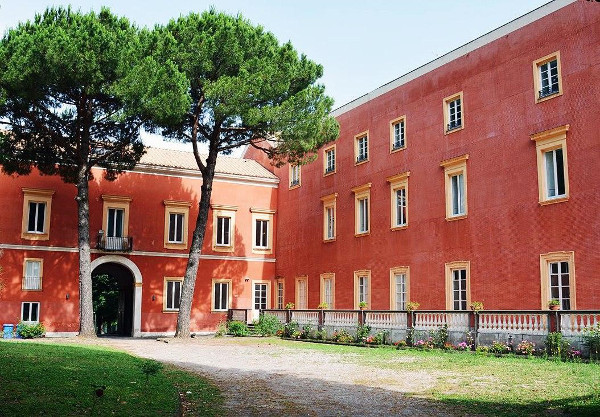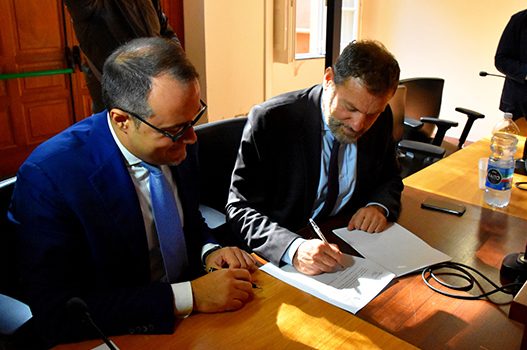3) The Royal Palace of Quisisana: signing of the development agreement between The Archaeological Park of Pompeii and the Comune of Castellammare di Stabia
The Royal Palace of Quisisana will host the Archaeological Museum of Castellammare di Stabia. Massimo Osanna, Director General of the Archaeological Park of Pompeii, and Gaetano Cimmino, Mayor of Castellammare di Stabia, have today met in the Conference Hall of the Royal Palace of Quisisiana to sign the agreement which aims to establish the Archaeological Museum in the rooms of the former Bourbon residence. It will be a prestigious location in which to host finds discovered in the Stabiae area, including Roman frescoes and artefacts from the villas of Stabiae that had already been partially housed in the Stabian Antiquarium, which has been closed since 1997. Recent restoration and requalification of the spaces has allowed us to recover the structure of the Royal Palace of Quisisana, which is located on the slopes of Mount Faito, thus reviving a site of historical heritage which is set to benefit from a high level of cultural and institutional use.
As part of the agreement, the Archaeological Park of Pompeii and the Comune of Castellammare di Stabia set out the operating procedures with which each party, within their own jurisdiction, intends to manage the use of spaces which are intended for the use of visitors and users. The creation of a museum which will serve as a centre of excellence at Castellammare di Stabia will complement the cultural offer and archaeological network of ancient Stabiae, alongside Villa San Marco and Villa Arianna - two important examples of aristocratic Roman villas on the Varano plateau.
“The approval of the framework agreement between the Archaeological Park of Pompeii and the Comune of Castellammare di Stabia, which paves the way for the creation of the Archaeological Museum in the Royal Palace of Quisisana, has been the first measure of the current city council, as a clear indication of the importance that this project holds for our Administration for the entire city of Castellammare di Stabia. We have asked to name the Museum after professor Libero D’Orsi, who while at the head of the excavation committee in 1950 oversaw the re-exploration of the Roman villas. In conjunction with the Archaeological Park of Pompeii, we will also continue to give impetus to the development of the excavations at Stabiae, which is a symbol of our history and culture”.
“This signature represents an important milestone for Stabiae and its rich cultural heritage”, declares Massimo Osanna, Director General of the Archaeological Park of Pompeii, “after troubled times, which have accompanied the process of finalising this agreement, we can at last move towards giving an appropriate home to the many finds from Stabiae. We will work to establish a significant permanent collection as swiftly as possible, as well as to provide temporary exhibitions in order to raise fresh awareness of this extraordinary heritage, and encourage tourism. To that effect, collaboration with the Comune of Castellammare is of fundamental importance to a more wide-ranging project of valorising the area. The intervention of safeguarding and protecting archaeological structures, which is of course our priority, alone is not enough to revitalise tourism in the area. It is my will to work together, with an aim to also improving accessibility both to and within the Villas of Stabiae”.

The PALACE OF QUISISANA
The Royal Palace of Quisisana at Castellammare di Stabia was constructed in the 13th century by the Angevin monarchs, as both a place of recreation and convalescence, but it was only with the works carried out by Charles III of Bourbon between 1765 and 1790 that the palace acquired its current appearance. The complex, which reflect the idea of the ‘hunting and recreational palace’, has an L-shaped plan, so as to allow one to enjoy a splendid view of the gulf on one side, and to be better connected to Castellammare on the other.


